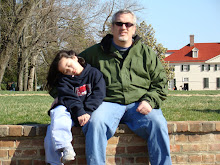Written by Claudia Gellman Mink
Published by Cahokia Mounds Museum Society - 1992
76 pages
Some things are what they are. This is a book usually sold by a museum. It's got your basic information. At least it is not a difficult read (though for my students it would be difficult), though it is pretty boring. It gives you the facts and that's that! There is very little anecdotes about the people's daily lives. It describes how life might have been but there are no "tales" here to hold the readers' interest.
It would be difficult for me to use in my class, which is the purpose of my reading this book. I could use some of the simpler excerpts perhaps, but the kids would be bored to death.
Ancient civilizations probably present a special problem to historians and archaeologists. There usually is no or little written record. And coupled with the fact that these civilizations were of course existing a long time ago, it is very difficult to get information about them. So that is one reason that it would be very difficult to write anecdotes and narratives. I believe in this book, the author and archaeologists don't even know the names of the kings. Still, I've seen it done where vivid pictures have been painted of what life might have been like. I remember once I read a book about the Aztecs. The 1st third was incomprehensible, but it got much better when it started to describe what daily life might have been like.
Here is a summary of those basic facts.
There were groups of indigenous peoples in the North American continent called The Mississippians. They started out living in the Southeastern woodlands of North America which is called The American Bottom. Basically it centered abound the confluence of Ohio, Mississippi and Missouri Rivers. Prior to the rise of Cahokia (the civilization being discussed here) mounds were being built. There is one famous one called the serpent mound that is shaped like a serpent, which is located in Ohio.
The Mississippians reached their apex with the city of Cahokia, which is located just east of the Mississippi River and current day St. Louis. It was larger than any city in Europe or the United States up until the year 1800. They built great giant mounds which were probably used for religious and communal purposes.
One reason they were able to become large was due to the cultivation of corn. It was the major food staple of their diet. Some historians hypothesize that the lack of a varied diet helped lead to the downfall of their civilization, along with other problems that can arise from big cites such as health, pollution, overpopulation and the depletion of their resources. Being located in the woodlands, wood of course was a major resource which they used for building structures.
They were a center of trade as proven by the seashells that were found which came from the Gulf of Mexico. The used the rivers as highways to travel and trade.
No one really knows what happened to them. it was probably a combination of things that led to their demise. The problems of big cities mentioned above were certainly a contributing factor. They could have also been conquered by neighboring hostile groups. Archaeologists have found proof of a wooden wall that went around the entire city, probably for protecting themselves, but also possibly to keep the social hierarchy of their society from breaking down - Perhaps it kept the riffraff out. And there is no evidence of any great battle.
The city lasted until the early 1400's when it was abandoned. It was too early for European explorers and conquerors to meet them, but they did meet some of their ancestors who told them tales of this great civilization.
I think if I teach this as a unit of study, I'll probably just stick to the information I just summarized. There are lots of ancient objects found, but that would be too subtle for my students to enjoy.
Monday, August 25, 2008
Subscribe to:
Comments (Atom)



